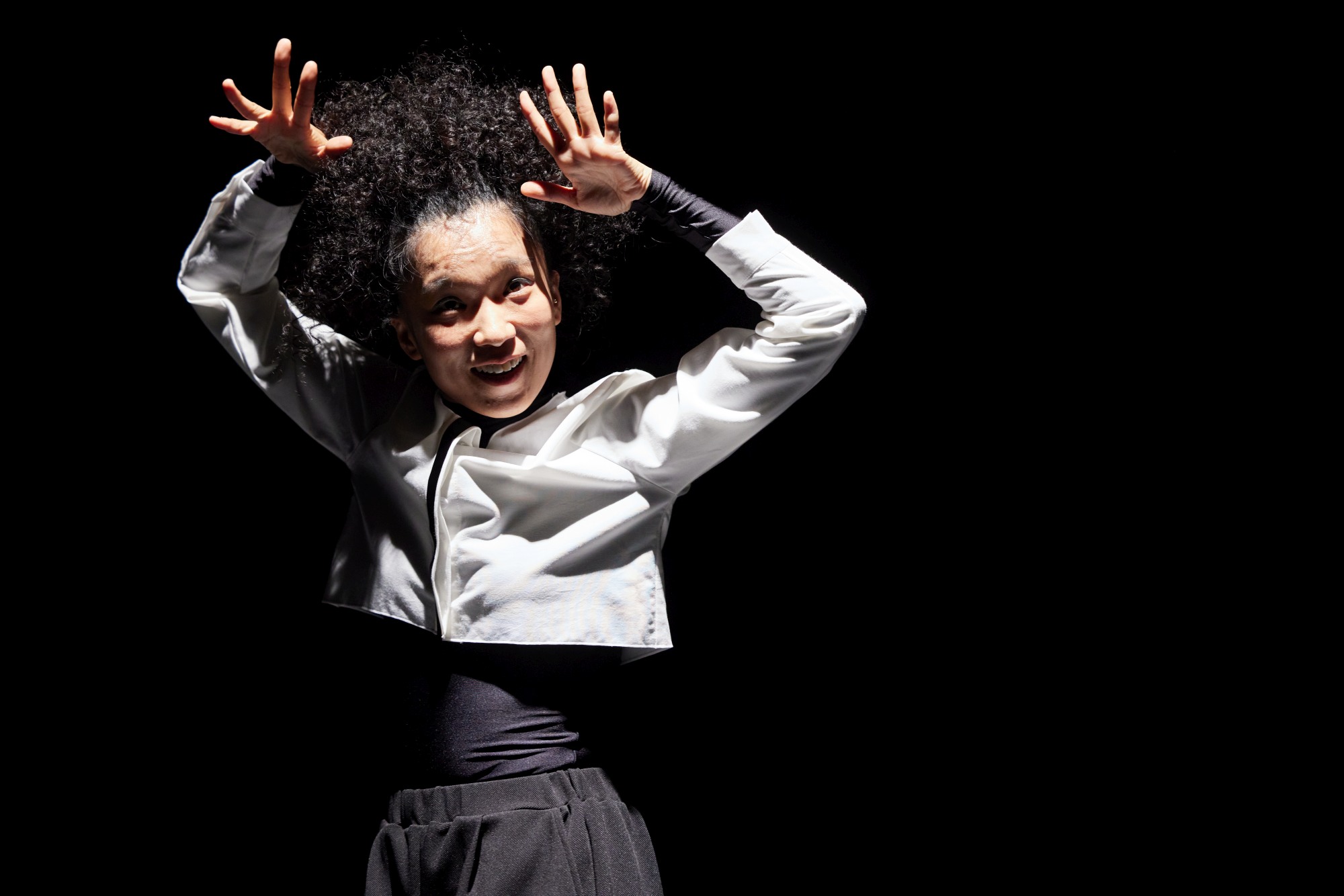Author: Emese Szabó
I am concerned with the question of how, as a critic, it is worth expressing oneself and from what perspective. When I was a university student, once I learned about a feedback method where we had to position ourselves before formulating our critique about the performance and about our expectations for a fuller theatre experience. In other words, we designated the perspective from which we spoke in order to articulate what would enhance the overall experience of the performance.
This practical knowledge came to my mind during the Sissi Autumn Dance Week while watching performances in the evenings, and participating in a critic’s residency workshop during the days. I gained a considerable amount of applicable theoretical knowledge here, but there was one simple thought that somehow became a mindset for me (kind of supplementing the method mentioned above): Be fair, because we know that the artist always creates a performance with an intention.

The intention of creation became evident to me in the work Plenir by Slovenian choreographer Daša Grgič, because at the end, she herself mentioned how important the theme was. The performance is about the cultural and ethnographic heritage passed down by our grandparents’ generation, especially focusing on the role of women in hardship – in pre-war, wartime and postwar periods – and how they traditionally undertook hard work to support their families. Facing contemporary hardships, such as war in our regions, I find it valuable to look at how previous generations dealt with similar situations.
Most of the performances we saw this week fit into a mode of expression where dance couldn’t be easily translated into language, leaving numerous possibilities for interpretation and perception for the audience. In this context, Plenir differed not only in its theme and dance language but also in the choice of props: rural settings and objects evoking old times like woven baskets, hay, milk jugs, etc. The items were mostly used for their intended purposes, meaning everything was exactly what it seemed. In one of the scenes, a woman held a woven basket, while another woman made a motion as if pouring something into it. Until this point, the milk jug was a milk jug, the small chair was a small chair, and the hay was hay. I followed the logic of the performance in this scene, and in my imagination, the imaginary liquid spilled through the basket, but not in the performers’ imagination. But can you pour anything, even symbolically, into a perforated basket without it leaking?
Presenting different experiences from the festival, I’d like to discuss another performance in my writing, namely Dream of Ladybug by Hai Ji Hye. On one hand, I find it exciting to think about a South Korean performance because it’s rare for us to get the chance to see works from such a different cultural environment. On the other hand, the performance strongly featured light dramaturgy, a topic that was also the subject of our critic’s residency workshop. Utilizing this acquired knowledge, it’s important for me to talk about this rarely mentioned theatrical apparatus.

The performance signifies a global experience of overwork, burnout, and pressure to perform, subtly leading us to realize that we are also part of the system that perpetuates overexertion. In the first half of the performance, we see how the trained dancer works with great force to dazzle us, the audience. Her movements are virtuosic, displaying immense effort in overcoming everyday difficulties. The most captivating part for me is when the performer reveals that she is wearing layered clothing, continuously removing a piece, transforming right before our eyes. While constantly spinning, undressing and entertaining us, she suddenly reaches a point where we see her in underwear, visibly exhausted. Marks from a vacuum massage are visible on her back, a therapeutic method with several beneficial effects, including movement function improvement. This implies that the massage also serves the performance, not just the individual.
At this point, the light dramaturgy becomes particularly memorable, as six circles of light appear on the floor, parallel to the bruises on the woman’s back caused by the vacuum massage, undoubtedly reminiscent of ladybug spots. In my interpretation, the dancer isn’t chasing perfection for herself but for the productivity-driven, exploitative capitalist system. It occurs to me that in a similar manner, ladybugs are also used in gardening for profit.
Throughout the festival, I saw a total of eight performances by choreographers and dancers from different countries. Despite the festival’s intention to open up to the audience and provide greater visibility for dance, overall, the event still seemed closed off to me. It would be good to know more about the curatorial decisions for this festival, since they weren’t transparently communicated. The audience members were mostly the same people, perhaps participants of the festival and the Beyond Front@ project. It seemed that caution, rather than openness to experimental forms, was a characteristic even of the selection of performances. Perhaps this is why I chose these two performances as the subjects of my critique. They aptly illustrate these directions: Plenir indicates the direction toward which the festival leaned more, and Dream of a Ladybug indicates the direction it could have taken.
The text was created in the framework of dance critics residency taking place in Budapest in November 2023 as part of Beyond Front@: Bridging Periphery project.

